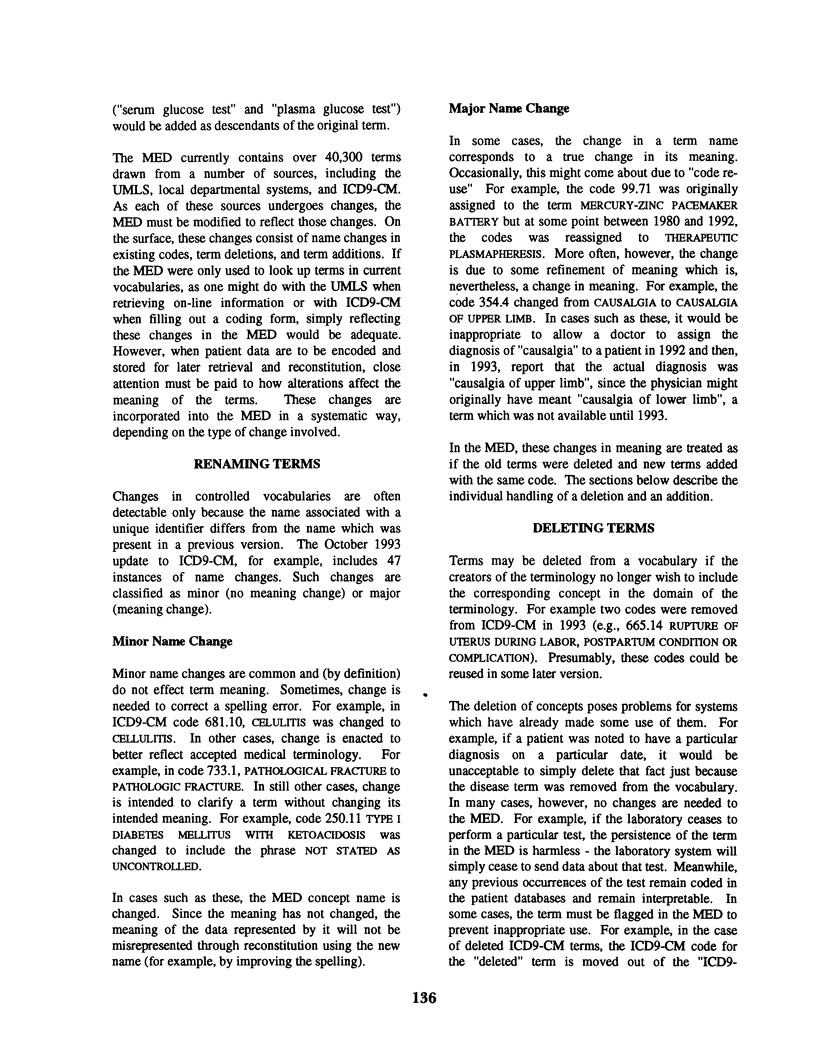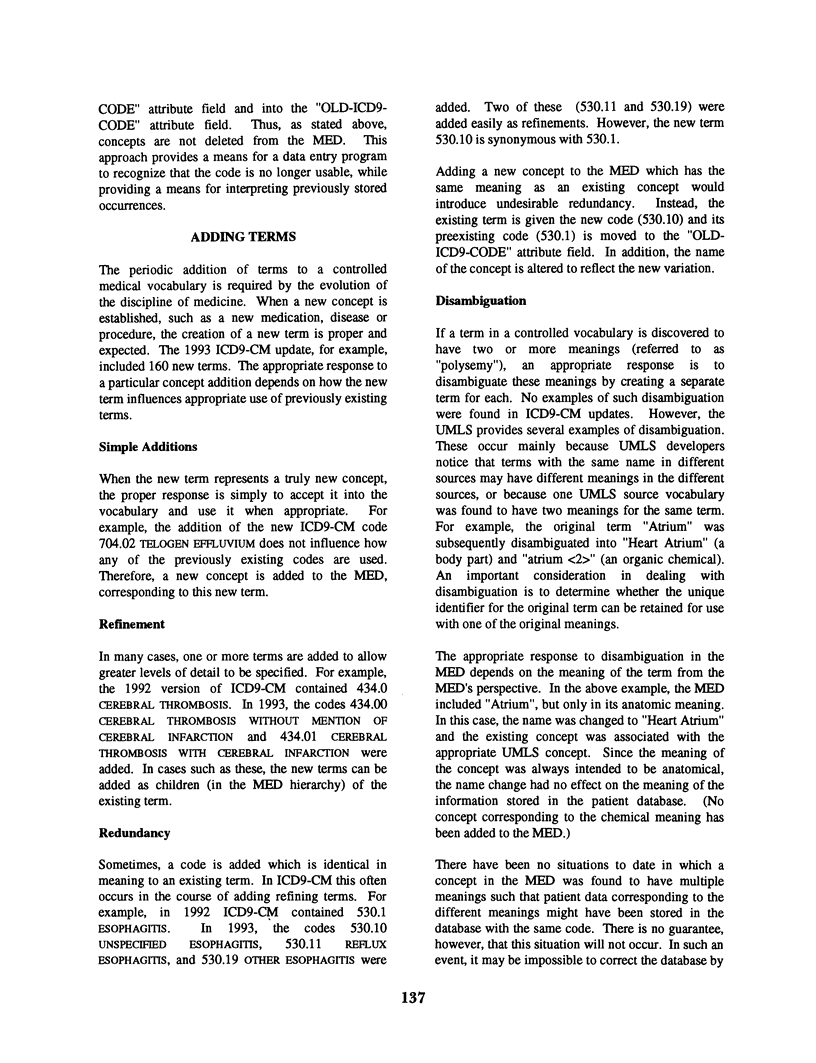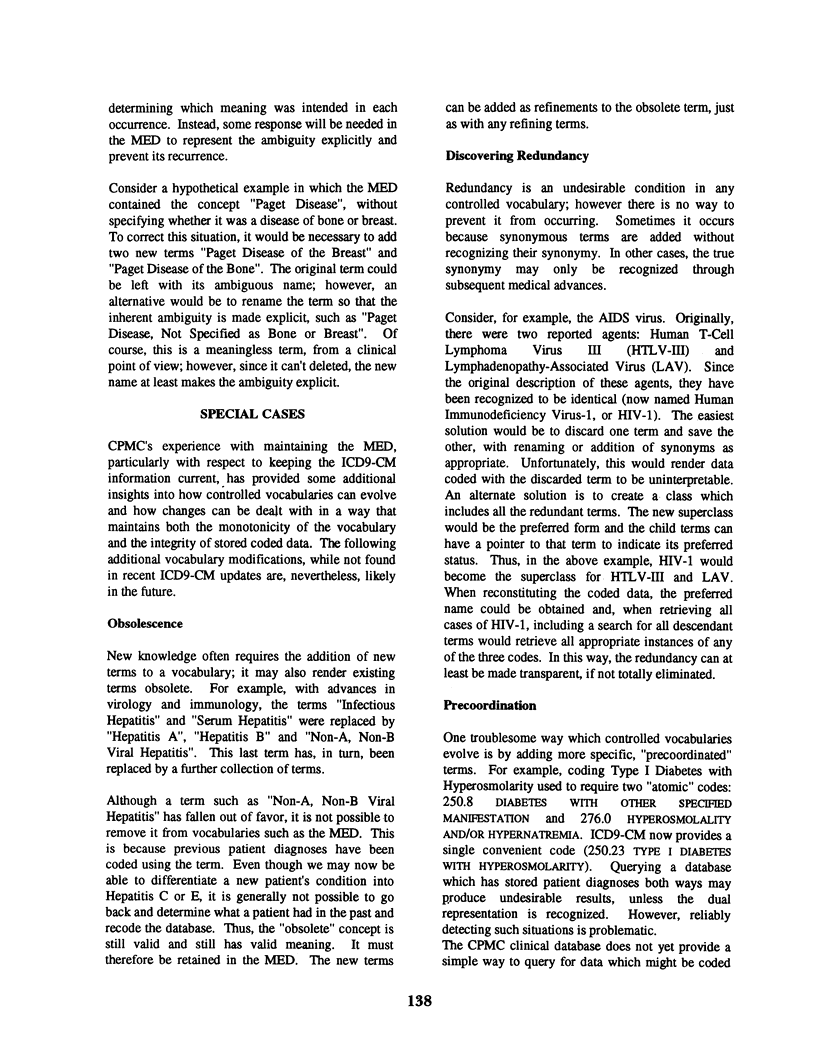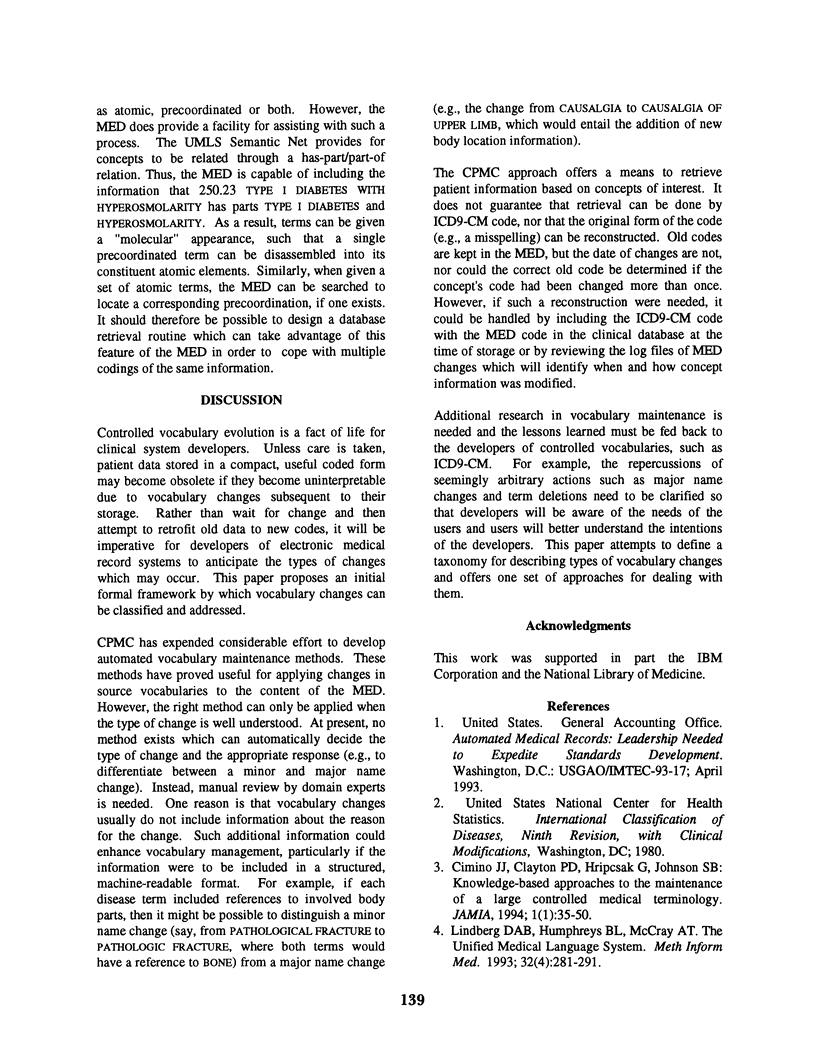Abstract
For the foreseeable future, controlled medical vocabularies will be in a constant state of development, expansion and refinement. Changes in controlled vocabularies must be reconciled with historical patient information which is coded using those vocabularies and stored in clinical databases. This paper explores the kinds of changes that can occur in controlled vocabularies, including adding terms (simple additions, refinements, redundancy and disambiguation), deleting terms, changing terms (major and minor name changes), and other special situations (obsolescence, discovering redundancy, and precoordination). Examples are drawn from actual changes appearing in the 1993 update to the International Classification of Diseases (ICD9-CM). The methods being used at Columbia-Presbyterian Medical Center to reconcile its Medical Entities Dictionary and its clinical database are discussed.
Full text
PDF




Selected References
These references are in PubMed. This may not be the complete list of references from this article.
- Cimino J. J., Clayton P. D., Hripcsak G., Johnson S. B. Knowledge-based approaches to the maintenance of a large controlled medical terminology. J Am Med Inform Assoc. 1994 Jan-Feb;1(1):35–50. doi: 10.1136/jamia.1994.95236135. [DOI] [PMC free article] [PubMed] [Google Scholar]
- Lindberg D. A., Humphreys B. L., McCray A. T. The Unified Medical Language System. Methods Inf Med. 1993 Aug;32(4):281–291. doi: 10.1055/s-0038-1634945. [DOI] [PMC free article] [PubMed] [Google Scholar]


